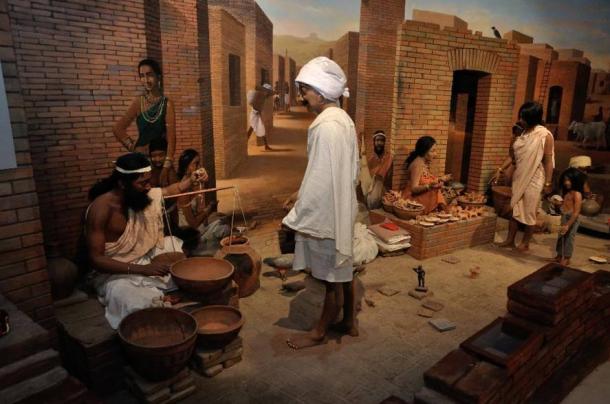Cracking The Culture Harappan Society
The Harappan Civilization may have been the first to use wheeled transport, in the form of bullock carts that are identical to those seen throughout South Asia today. It also appears they built boats and watercraft—a claim supported by archaeological discoveries of a massive, dredged canal, and what is regarded as a docking facility at the. Harappan civilization is one of the most ancient civilizations of the world. It was believed to be a hub of art and culture and architecture. The discoveries made at these architectural sights give us great insight into the lives & lifestyles of our ancestors.
- Compare Aryan And Harappan Cultures
- Cracking The Culture Harappan Society Journal
- Cracking The Culture Harappan Society Culture
- Ancient Indian History Tutorial

- Ancient Indian History Resources
- Selected Reading
Till 1920, the relics of the civilization were found only in the Indus valley region; therefore, it was known as the Indus civilization.
In 1920-21, the Harappan civilization was discovered in the excavations by D. R. Salini (at Harappa) and by R. D. Banerjee (at Mohenjo Daro).
The remains of the civilization were first noticed at Harappa, therefore it is also known as the Harappan civilization.
Compare Aryan And Harappan Cultures
Geographical Facts
Cracking The Culture Harappan Society Journal

Following are the important geographical facts of distribution of Harappan civilization −
Cracking The Culture Harappan Society Culture
The 1,400 settlements of this civilization discovered so far are distributed over a very wide geographical area covering almost 1,600 km (east to west) and 1,400 km (north to south).
Harappan civilization extent starts from −
Sutkagendor (Baluchistan) in the west to Alamgirpur (Meerut, Uttar Pradesh) in the east and
Manda (Akhnoor District, Jammu and Kashmir) in the north to Daimabad (Ahmadnagar District, Maharashtra) in the south.
About 1,400 settlements of the Harappan culture are known from different parts of India. About 925 settlements sites are now in India and 475 are in Pakistan.
The total geographical stretch of Harappan civilization is about 1,250,000 sq. km which is more than 20 times of the area of Egyptian and more than 12 times of the combined area of Egyptian and Mesopotamian civilizations.
Mostly, the Harappan settlements were located on river banks of which −
Only 40 settlements were located on the Indus and its tributaries;
As many as 1,100 (80%) settlements were located on the vast plain between the Indus and the Ganga, comprising mainly the Saraswati river system (which no more exist);
About 250 settlements were found in India beyond the Saraswati River system; a number of them were located in Gujarat, and a few in Maharashtra.
The distribution pattern of settlements shows that the focus of Harappan civilization was not the Indus, but the Saraswati River and its tributaries, which flowed between the Indus and the Ganga. Therefore, few researchers prefer to call it as Saraswati civilization or Indus-Saraswati civilization
The settlements belonging to this civilization can be classified as
Small villages (which were up to 10 hectares),
Larger towns and small cities (10 to 50 hectares).
Large cities settlements such as −
Mohenjo Daro (+250 hectares),
Harappa (+150 hectares),
Ganawariwala (+80 hectares),
Rakhigarhi (+80 hectares),
Kalibangan (+100 hectares), and
Dholavira (+100 hectares).
Large cities were surrounded by vast agricultural lands, rivers, and forest that were inhabited by scattered farming and pastoral communities and bands of hunters and food-gatherers.
Excavations at the sites of Mohenjo Daro, Harappa, Kalibangan, Lothal, Surkotada, Dholavira, etc. have given us a fair idea about the various aspects such as town planning, economy, technology, religion, etc. of this civilization. Neo five factor inventory item.